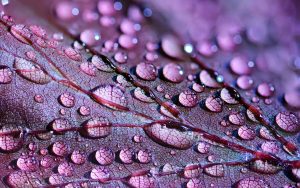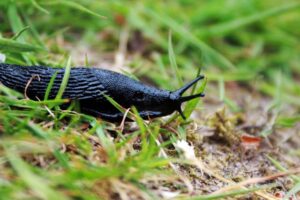Creating a rock garden is a wonderful way to incorporate natural beauty into your outdoor landscape. These gardens not only provide an alternative to traditional gardens but also offer unique ways to showcase a variety of plants that thrive in rocky, well-drained soils.
This guide will explore a selection of remarkable plants perfect for rock gardens, highlighting their unique attributes and how they contribute to the overall aesthetic and ecological balance of this beautiful gardening style.
Yellow Alyssum (Alyssum saxatile)
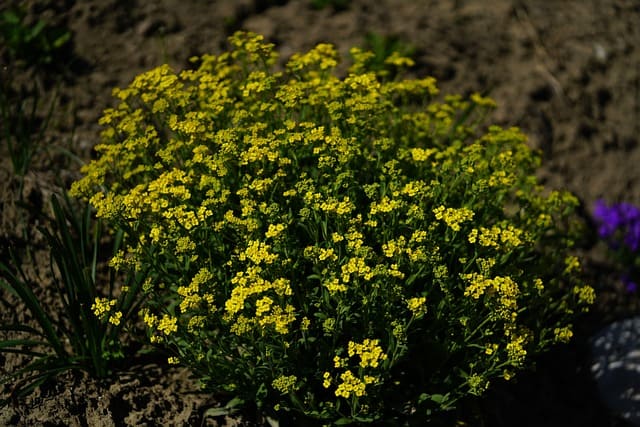
One standout plant for rock gardens is Yellow Alyssum. This perennial, which blooms profusely in the spring and early summer, is known for its clusters of bright yellow flowers that create a cheerful display against the subdued tones of stones. Alyssum thrives in poor, well-drained soil, making it an ideal candidate for rocky landscapes.
Beyond its ornamental value, Yellow Alyssum attracts pollinators like bees and butterflies, fostering a vibrant ecosystem in your garden. Additionally, its low-growing habit means it works wonderfully as a ground cover, helping to suppress weeds and fill gaps between rocks. It’s a particularly appealing choice for those looking to add bursts of sunshine to their rock arrangements.
Ice Plant (Delosperma cooperi)

When you need a plant that can withstand heat and drought, turn to the Ice Plant. With its succulent leaves and vibrant magenta flowers, this hardy ground cover adds texture and color to any rocky outcrop. Ice Plants thrive in sandy or gravelly soils, making them a natural fit for rock gardens where other plants might struggle.
In addition to its low maintenance needs, this perennial blooms from late spring through early autumn, providing a long season of interest. The plant’s fleshy leaves retain moisture, allowing it to survive in dry conditions, which makes it a fantastic choice for xeriscaping or low-water landscape designs.
Angelina Stonecrop (Sedum rupestre ‘Angelina’)

Angelina Stonecrop is a dazzlingly unique plant that brings both visual appeal and resilience to rock gardens. With its bright golden-yellow foliage, Angelina is particularly striking in the early spring and summer months. This creeping succulent thrives in full sun and poor soils, often cascading over rocks and creating a vibrant green-yellow carpet.
One of the great advantages of Angelina Stonecrop is its versatility. It grows well both in garden beds and in containers, making it a flexible option for any rock garden setup. In addition, during the autumn months, the foliage takes on an orange hue, offering a delightful change of scenery as seasons shift.
Dragon’s Blood Stonecrop (Sedum spurium ‘Dragon’s Blood’)
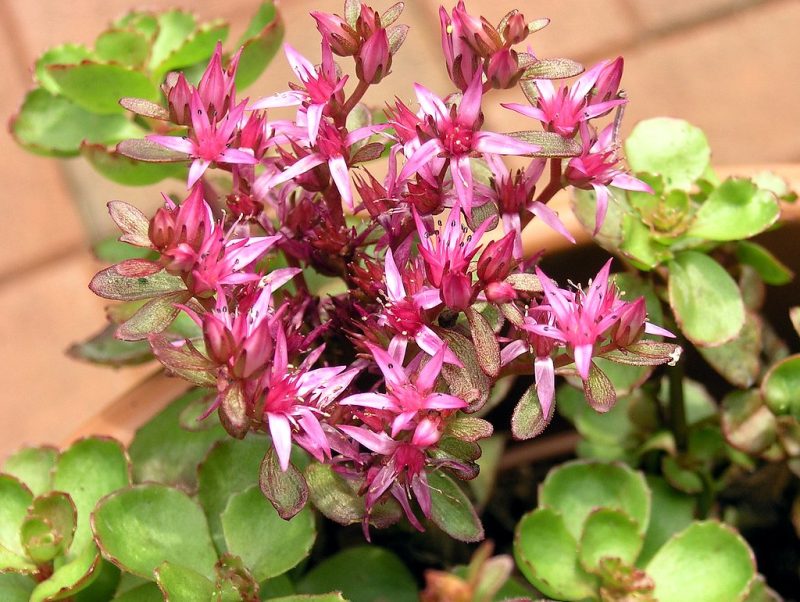
Another splendid Sedum variety, the Dragon’s Blood Stonecrop, earns its name from its deep red foliage and vibrant pink flowers. This plant can add a dramatic touch to your rock garden, especially when paired with lighter stones or other colorful plants. Like other stonecrops, it prefers sunny locations and well-drained soil, thriving on neglect.
The flowers appear in the summer and are a magnet for pollinators, enhancing the ecological value of your garden. As an added bonus, the deep red color of the foliage can intensify during cooler months, maintaining visual intrigue even as the flowering season concludes.
Hens and Chicks (Sempervivum tectorum)
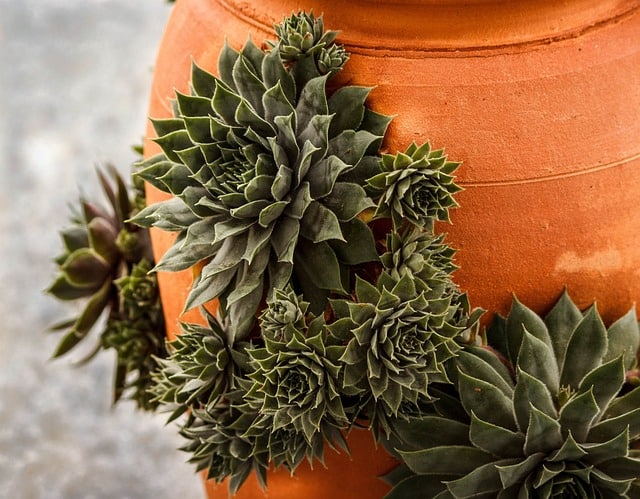
Often considered a classic choice for rock gardens, Hens and Chicks are revered for their rosette-shaped leaves and adaptability. This succulent plant grows in clusters, where the “hen” (the mother plant) produces “chicks” (baby plants) that spread joyfully around it. Their ability to thrive in rocky, dry conditions makes them a perfect fit for any alpine or rock garden.
One of the most appealing aspects of Hens and Chicks is their range of colors and textures; they are available in green, red, purple, and more, creating visual diversity. They are remarkably low-maintenance and can withstand harsh conditions, making them suitable for beginner gardeners and seasoned enthusiasts alike.
Creeping Thyme (Thymus serpyllum)
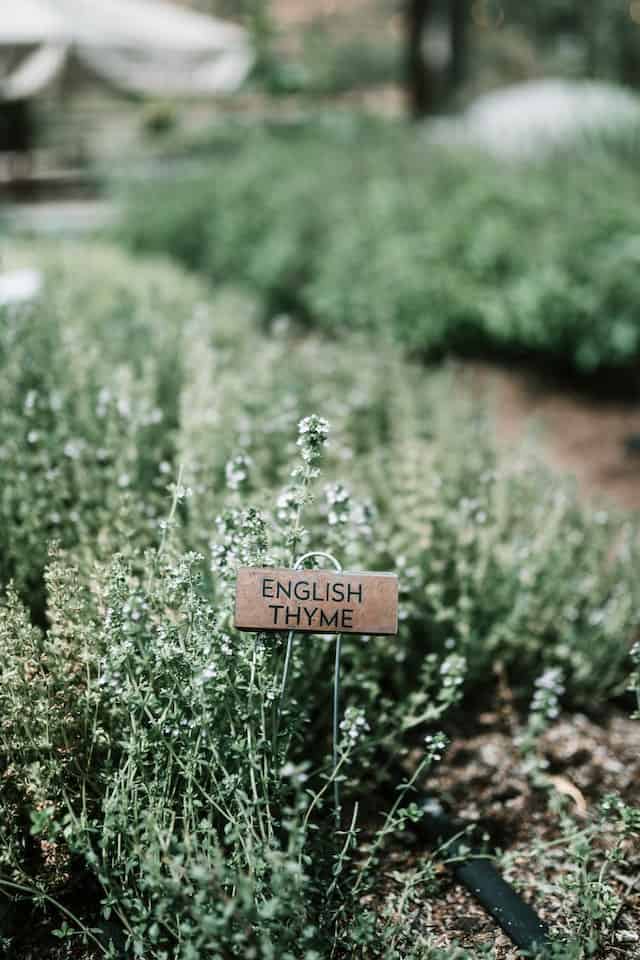
Creeping Thyme is a delightful and aromatic ground cover that thrives in sunny spots within rock gardens. This perennial is not only cherished for its dense, mat-like growth but also for its fragrant foliage. When stepped upon, it releases a pleasant herbal scent, which is especially enjoyable in a garden setting.
In addition to its beauty, Creeping Thyme produces small clusters of violet or pink flowers in late spring to early summer, attracting beneficial insects and pollinators. This plant can also withstand drought, making it an ideal choice for low-maintenance gardens. With its ability to help stabilize soil and prevent erosion, Creeping Thyme truly fulfills multiple roles within a rock garden.
Blue Fescue Grass (Festuca glauca)

Blue Fescue Grass adds a striking contrast to the more colorful flowers in a rock garden. This perennial grass features fine, arched leaves that have a stunning blue hue, creating a visual anchor amidst the abundant textures and colors of the surrounding plants. Growing in clumps, Blue Fescue is an excellent choice for borders or as an ingredient in mixed plantings.
It prefers well-drained soils and full sun, making it ideal for rocky environments where water retention might be a concern. The grass’s texture provides a lovely contrast to the solidity of stones, and its graceful form enhances the overall design of the rock garden.
Snow-in-Summer (Cerastium tomentosum)
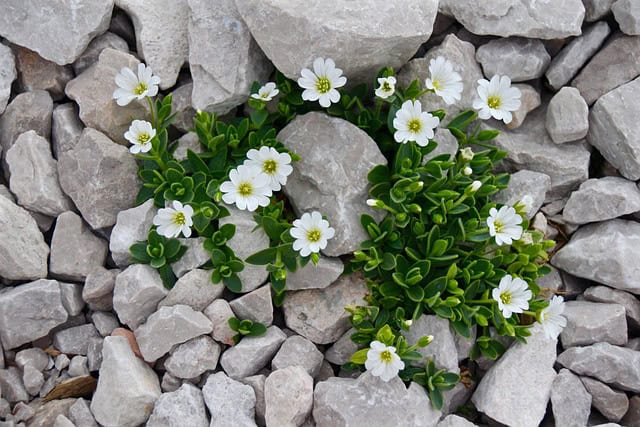
If you’re looking for a plant that blooms profusely and enchants your rock garden with a blanket of white flowers, Snow-in-Summer is the answer. Originating from Europe, this perennial is well-known for its ability to thrive in harsh conditions. Its silvery-grey foliage looks attractive even when not in bloom, making it a versatile choice throughout the seasons.
Snow-in-Summer typically flowers in late spring to early summer, covering itself in a lovely display of star-shaped white blooms. This plant is particularly effective as ground cover, easily filling in spaces between stones while adding beauty and a delicate fragrance to the garden.
Candytuft (Iberis sempervirens)
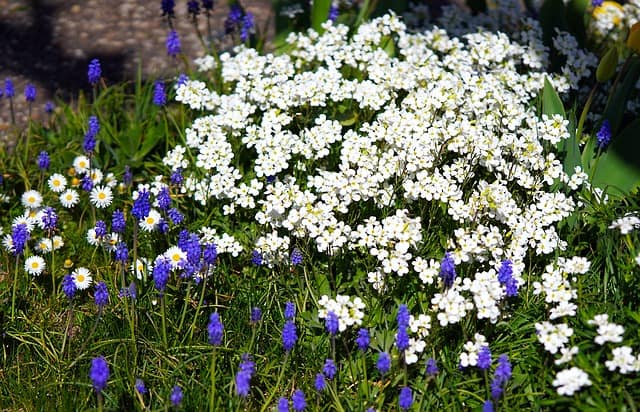
Candytuft is a charming evergreen perennial that can bring vibrant white (and sometimes pink) blooms to your rock garden during spring. This plant forms a low, spreading carpet that works well on rocky slopes or in tandem with larger rocks. The compact growth habit of Candytuft makes it a perfect choice for border edging.
Besides its aesthetic appeal, Candytuft is also relatively easy to care for, requiring little attention once established. The flowers attract butterflies, adding liveliness to your outdoor space while enhancing its biodiversity. It’s a must-have for anyone looking to add a touch of charm to their garden.
Ajuga (Ajuga reptans)
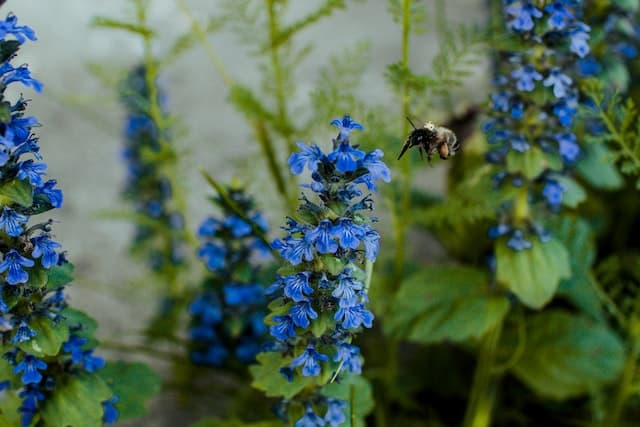
Ajuga, often called Bugleweed, possesses the unique characteristic of being both a lovely ground cover and a captivating flowering plant. With its glossy leaves that can range from deep green to burgundy, it provides an attractive foliage accent in any rock garden. Ajuga is best known for its stunning blue flowers that bloom in mid-spring, creating a delightful display that draws in pollinators.
One of the advantages of Ajuga is its adaptability to various soil types, including clay and sandy soils, which makes it a perfect candidate for rock gardens. Additionally, its ability to spread and create a lush ground cover makes it effective in suppressing weeds, contributing to a healthy garden ecosystem.
Creeping Phlox (Phlox subulata)

Creeping Phlox is another fantastic flowering ground cover that enhances rock gardens with vivid hues ranging from pink and lavender to white and blue. This plant forms a dense mat, spilling beautifully over stones and filling in gaps with its luxurious blooms each spring.
In addition to its visual appeal, Creeping Phlox attracts various pollinators and benefits birds, offering a lively ecosystem. Its hardiness and ability to thrive in poor, well-drained soils make it an excellent choice for challenging garden conditions.
Pasque Flower (Anemone patens)
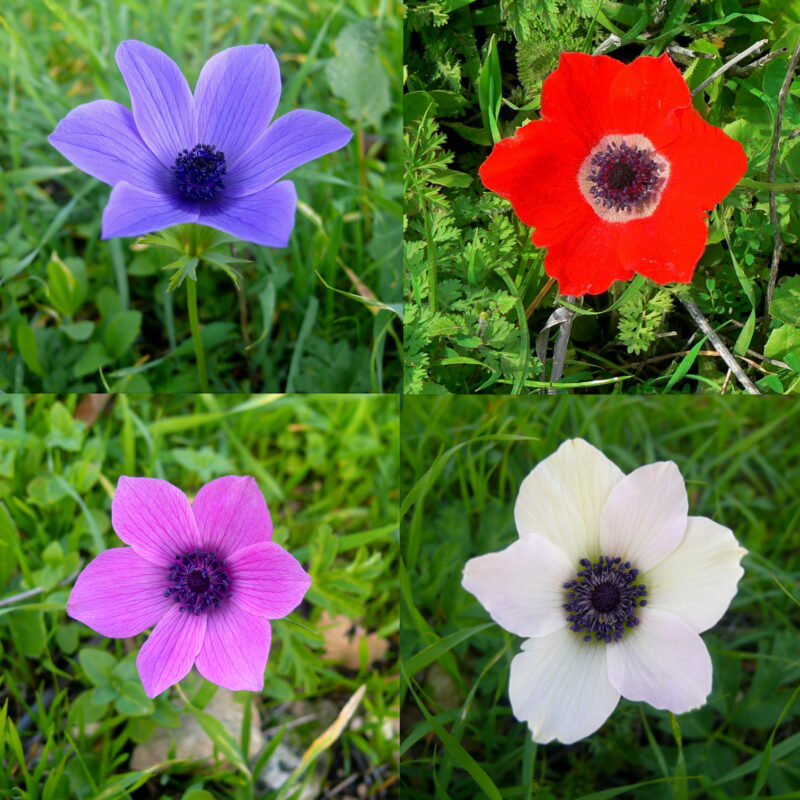
Pasque Flower is a remarkable plant that adds a unique touch to rock gardens. Known for its delicate, bell-shaped purple flowers that bloom in early spring, this perennial graces the garden before most others have begun to show their colors. The silky texture of its petals contrasts beautifully with the ruggedness of stone.
Further magnifying its intrigue, the Pasque Flower features finely divided foliage that emerges after flowering, maintaining visual interest throughout the season. Beyond its aesthetic qualities, this plant is also a valuable nectar source for early pollinators, making it an excellent addition to promote biodiversity.
Reticulated Iris (Iris reticulata)
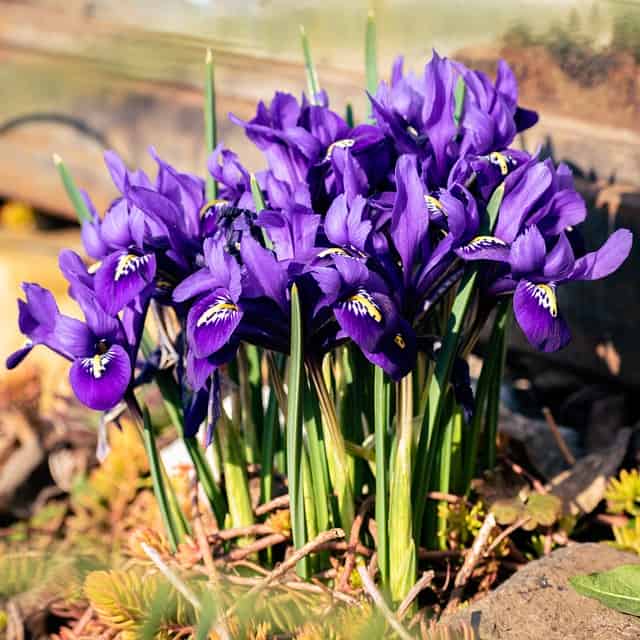
One of the first irises to bloom in spring, the Reticulated Iris is a brilliant choice for rock gardens, where its small stature can perfectly complement stony surroundings. These irises boast vibrant blue, yellow, or white flowers adorned with delicate patterns, creating a striking yet understated floral display.
This plant thrives in well-drained soil and can tolerate dry conditions, making it well-suited for rocky settings. What makes Reticulated Iris particularly appealing is its ability to naturalize over time, meaning that with proper care, it can transform a rock garden into a blooming oasis with little input needed.
Wood Spurge (Euphorbia amygdaloides)
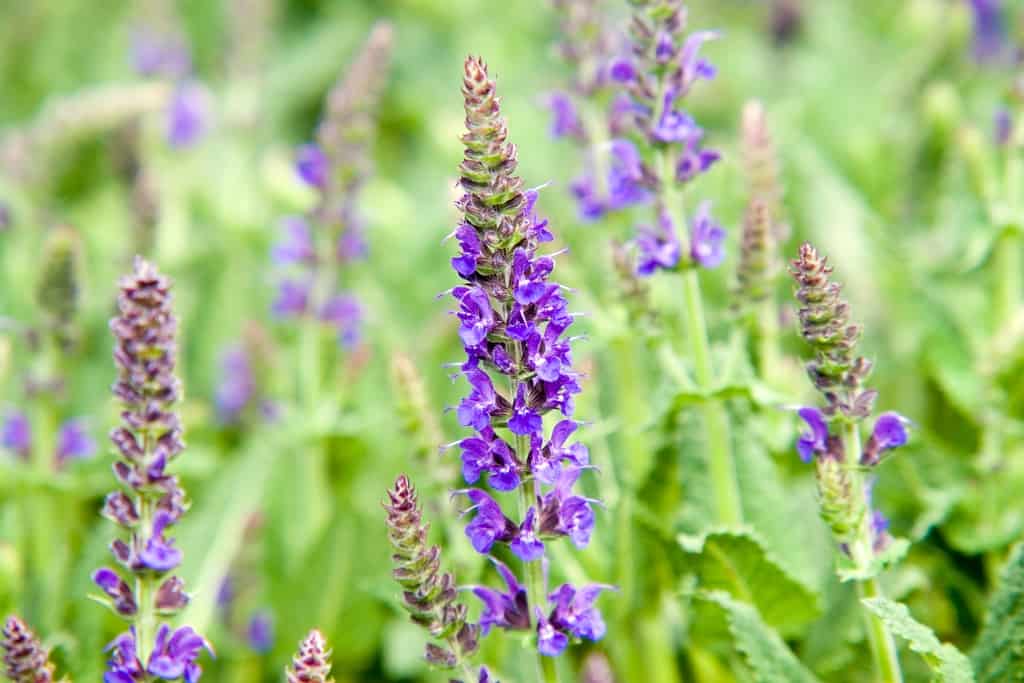
Wood Spurge is often a lesser-known gem for rock gardens, yet it possesses an enduring beauty with its unique greenish-yellow bracts. This perennial has a clumping habit, providing structural interest to the garden, especially when planted in drifts or clusters amongst larger stones.
In addition to its ornamental qualities, Wood Spurge is a drought-tolerant plant that thrives in well-drained soils. It attracts pollinators, making it a valuable addition to your garden ecosystem while remaining low-maintenance and resilient against pests.
Moonbeam Coreopsis (Coreopsis verticillata ‘Moonbeam’)
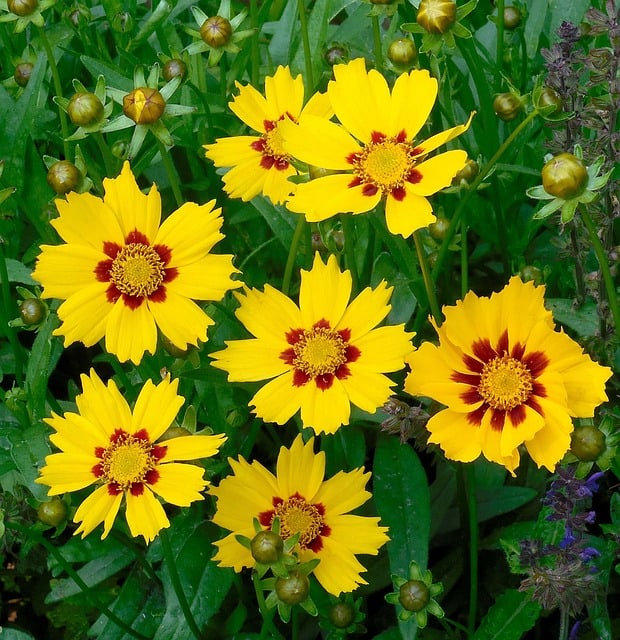
Moonbeam Coreopsis is a bright and cheery addition to any rock garden. Its soft yellow, daisy-like flowers bloom from late spring through summer, creating a stunning contrast against the ruggedness of the surrounding rocks. This plant’s fine, thread-like leaves lend a delicate appearance while maintaining sturdy resilience.
Coreopsis thrives in full sun and average soil, making it an easy care option that rewards gardeners with a long blooming period. Attracting butterflies and beneficial insects, it’s a perfect candidate for those looking to cultivate a thriving habitat within the rock garden.
Lavender (Lavandula spp.)
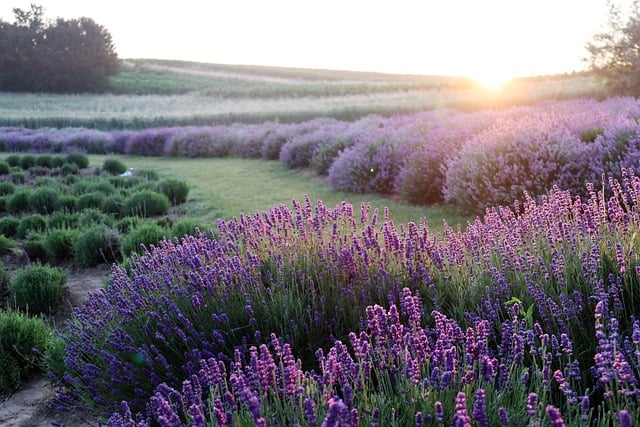
Few plants are as universally adored as Lavender, renowned for its fragrant foliage and stunning purple flowers. Lavender not only adds a fantastic visual element to rock gardens but also provides aromatic qualities that can elevate the overall ambiance. This versatile plant works well as a border, ground cover, or accent piece amidst stones.
Lavender thrives in well-drained soils and full sun, making it an excellent choice for dry and rocky areas. Its ability to attract bees and other pollinators enhances the ecological value of the garden, creating both a delightful atmosphere and a beneficial habitat.
Yarrow (Achillea millefolium)

Yarrow is a time-honored plant in many gardens, valued for its hardiness and resilience. Available in various colors, including yellow, pink, and white, it produces flat-topped clusters of flowers throughout the summer, providing a beautiful contrast against the textured backdrop of rocks.
Beyond its striking appearance, Yarrow is known for its medicinal properties, historically used in traditional remedies. Its drought tolerance and ability to thrive in poor soils make it a fantastic choice for rock gardens, ensuring you can enjoy a beautiful landscape with minimal maintenance.
Autumn Joy Sedum (Sedum ‘Autumn Joy’)

Autumn Joy Sedum is a beloved staple for rock gardens, boasting robust, succulent-like foliage and stunning pink to red blooming clusters in late summer and early fall. This tall variety grows well in sunny, well-drained areas, complementing lower-growing plants in the garden.
As the blooms mature towards autumn, they change color, providing visual interest even as the growing season wanes. Autumn Joy is also excellent at attracting bees and butterflies, making it not only a beautiful addition but also a beneficial choice for your garden’s ecosystem.
Spiked Speedwell (Veronica spicata)
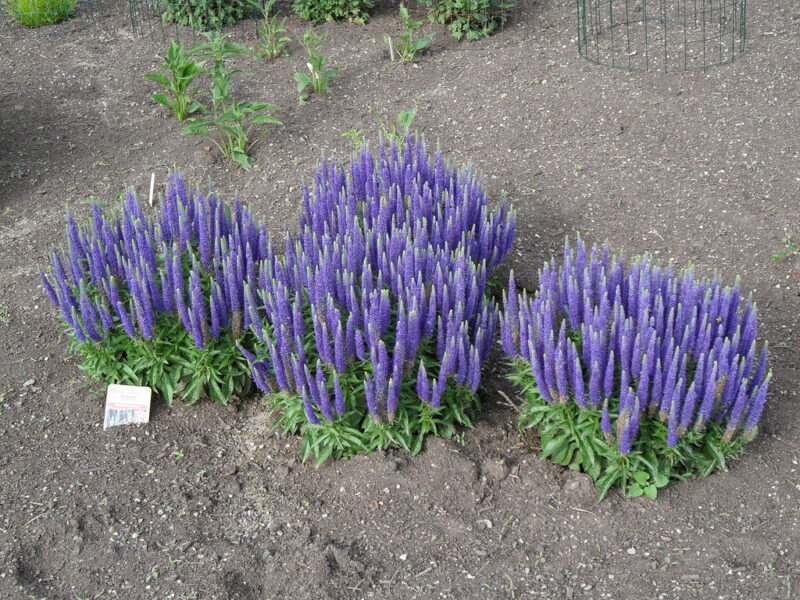
Spiked Speedwell brings an appealing vertical element to rock gardens with its tall flower spikes adorned with small blue, purple, or white flowers. Blooming from late spring through summer, the erect spikes harmonize beautifully with the surrounding rocky landscape.
This plant is hardy, drought-tolerant, and thrives in a variety of soil conditions, making it a valuable option for rock gardens. Additionally, Spiked Speedwell attracts pollinators, enhancing your garden’s biodiversity while adding visual height and drama to your floral display.
Columbine (Aquilegia spp.)
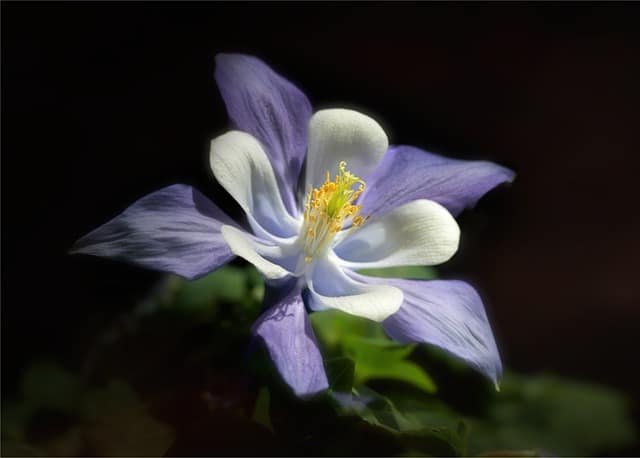
Columbine is a captivating flower, known for its unique, ornate blooms that come in various colors, including blue, purple, red, and yellow. With its delicate, whimsical shape, the Columbine will serve as an eye-catching focal point in your rock garden.
These plants thrive in a variety of conditions, including partial shade, making them adaptable for different garden spots. They attract hummingbirds and various insects, adding life and movement to your rock garden. With their graceful form and charming blooms, Columbine is an enchanting addition worth considering.
Coneflower (Echinacea spp.)
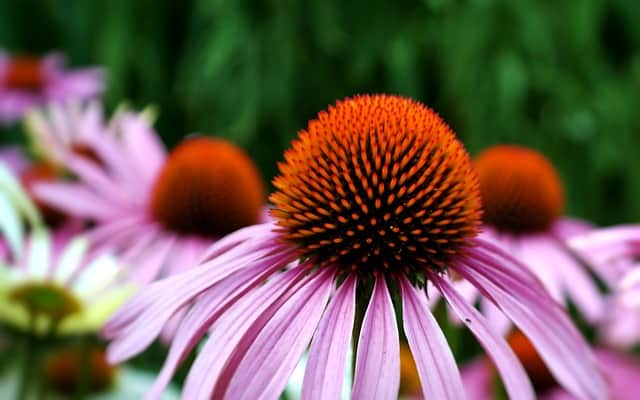
Coneflowers are fantastic perennial plants that add both structure and color to rock gardens. With their distinctive cone-shaped centers and vibrant petals available in colors such as purple, pink, and orange, these flowers are a reliable choice for attracting pollinators, including butterflies and bees.
This resilient plant thrives in poor, well-drained soil and is drought-resistant once established. Coneflowers make a terrific addition for those looking to create a more wildlife-friendly rock garden, offering an inviting habitat for various beneficial creatures.
Purple Fountain Grass (Pennisetum setaceum ‘Rubrum’)
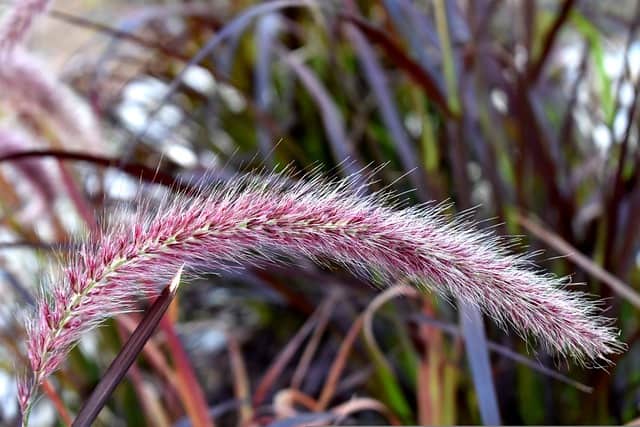
Purple Fountain Grass stands out for its striking purple foliage and fluffy flower plumes that sway gracefully in the breeze. This ornamental grass adds a soft texture to rock gardens, providing a beautiful contrast to the solid stone elements.
Preferring full sun and well-drained soil, this grass works beautifully alongside other flowers and perennial plants. Its deep color provides a rich backdrop, enhancing the vibrancy of the flowering plants nearby. Furthermore, Purple Fountain Grass can tolerate drought conditions, ensuring it remains an attractive feature even in drier summer months.
Blue Rug Juniper (Juniperus horizontalis ‘Wiltonii’)

Blue Rug Juniper is an evergreen ground cover perfect for creating a carpet of color and texture in rock gardens. With its blue-green foliage, this low-growing shrub cascades elegantly over the edges of rocks, softening harder landscapes while providing year-round interest.
Resilient and drought-tolerant, these junipers prefer well-drained soil and thrive in full sun. Their ability to resist pests and diseases makes them low-maintenance, allowing you to enjoy a beautiful rock garden without excessive care. Whether used to spill over stones or as a filler between larger plants, Blue Rug Juniper enhances any garden design.
Shasta Daisy (Leucanthemum × superbum)
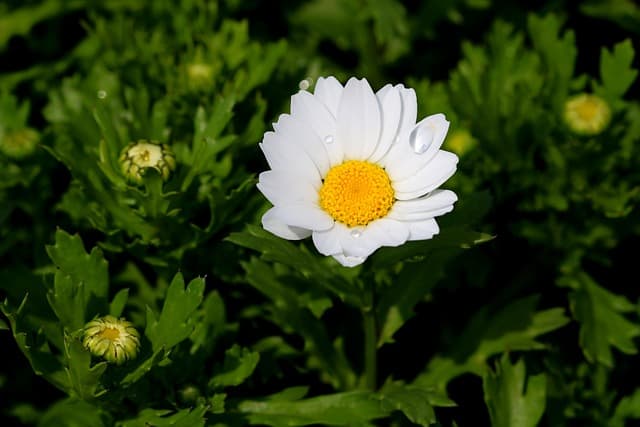
A classic choice for perennial gardens, the Shasta Daisy is an essential addition to any rock garden. Known for its cheerful white flowers and golden centers, this plant blooms abundantly in late spring and early summer. Its upright habit and attractive foliage provide a harmonious contrast against rocks and other plants.
Shasta Daisies thrive in sunny spots and are relatively low-maintenance, making them a reliable choice for gardeners. They also work well in groups, creating a striking visual effect that draws the eye and invites pollinators, enhancing the diverse ecosystem within your garden.
Black-Eyed Susan (Rudbeckia hirta)
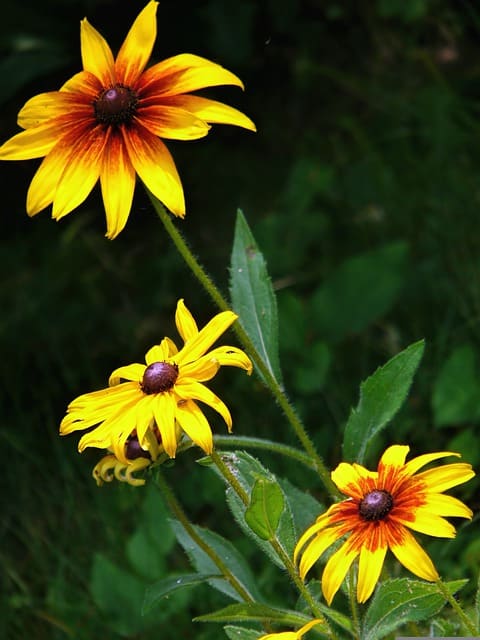
None can deny the iconic beauty of Black-Eyed Susans, with their bright yellow petals and dark centers adding vibrant energy to rock gardens. Blooming from late summer to early fall, these perennials will ensure that your garden continues to shine even as other flowers fade.
Tolerating a variety of soils and conditions, Black-Eyed Susans attract a myriad of beneficial insects like bees and butterflies. Their hardy nature and resilience against pests make them a favorite among gardeners, providing a stunning display while also serving ecological purposes.
Perennial Salvia (Salvia nemorosa)
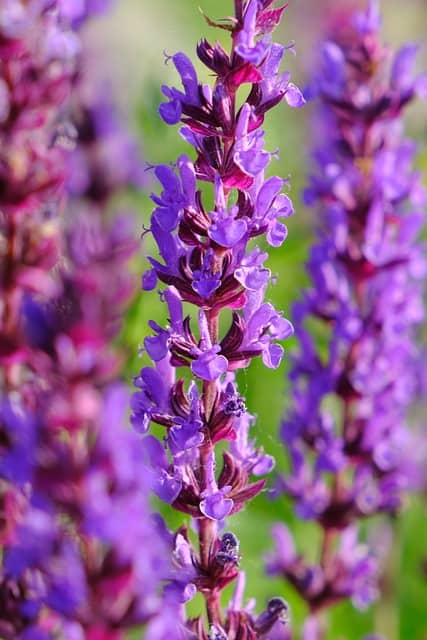
Perennial Salvia is a star of rock gardens, cherished for its tall, spiky flowers that vary in shades of blue, purple, and pink. These plants thrive in full sun, providing excellent nectar sources for pollinators. Their vertical growth habit adds depth and height to the landscape while enhancing the beauty of surrounding lower plants.
This hardy perennial prefers well-drained soil and is drought-resistant once established, making it an excellent long-term choice for low-maintenance gardens. The aromatic foliage of Salvia offers additional sensory benefits, contributing a fragrant touch when brushed against.
Six Hills Giant Catmint (Nepeta x faassenii ‘Six Hills Giant’)

Six Hills Giant Catmint is a robust perennial with aromatic gray-green foliage and lush spikes of violet-blue flowers that bloom from late spring through summer. It’s a marvelous choice for rock gardens, thriving in dry, poor soils while attracting bees and butterflies.
This plant’s sprawling habit creates a lovely cascading effect over rocks, softening the hard edges of the garden elements. Catmint is tolerant of drought and low maintenance, making it an ideal addition for those looking for beauty without excessive effort.
Russian Sage (Perovskia atriplicifolia)
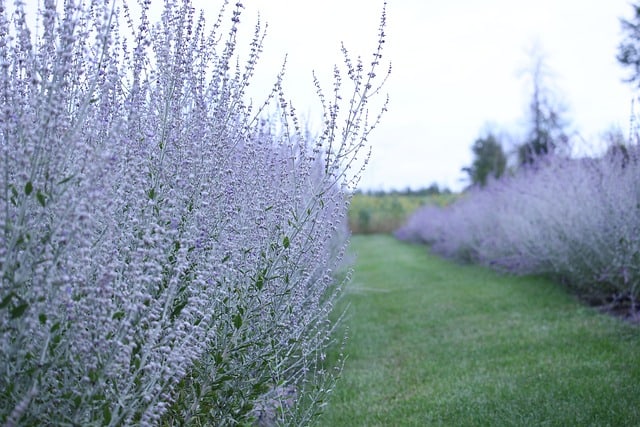
Adding a touch of silvery-blue elegance, Russian Sage brings a unique texture and color to rock gardens. With tall, airy spikes adorned with small lavender-blue flowers, this perennial blooms throughout the summer, offering an extended season of interest.
Russian Sage is robust and drought-resistant, thriving in well-drained soils and full sun. The plant’s aromatic foliage is a deterrent to pests, making it an environmentally friendly choice for avid gardeners. Its graceful stature adds height and drama to the rock garden, enhancing its visual appeal.
Mugo Pine (Pinus mugo)

For a more woody element in your rock garden, Mugo Pine is a stunning choice. This dwarf conifer is characterized by its dense, bushy growth and dark green needles. Mugo Pine provides year-round interest, offering structure and a natural contrast to other flowering plants.
Well-suited to rocky landscapes, Mugo Pine thrives in various soil conditions and is tolerant of drought. Its compact form makes it an excellent option for adding vertical interest without overwhelming smaller flowering plants, contributing to a beautifully balanced garden layout.
Rockspray Cotoneaster (Cotoneaster horizontalis)
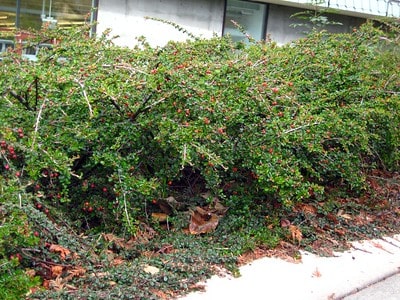
Rockspray Cotoneaster is a fantastic ground cover option, known for its horizontal spreading habit and red berries that attract birds. This low-maintenance shrub is perfect for rock gardens, thriving in well-drained soils and sunny spots.
The fine-textured foliage provides a lovely backdrop for flowering plants while spilling over rocks, softening the look of your garden. With its ornamental fruits and year-round interest, Rockspray Cotoneaster adds aesthetic and ecological benefits to your landscape.
Lamb’s Ear (Stachys byzantina)
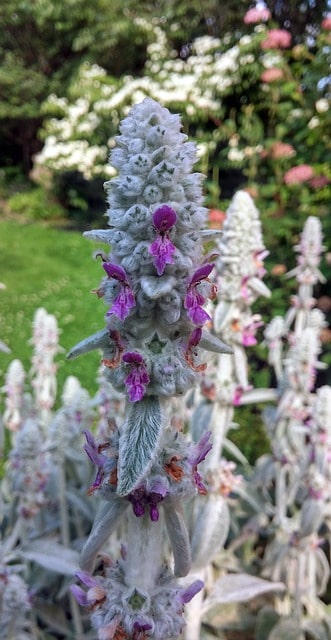
Lamb’s Ear is a unique perennial featuring soft, fuzzy leaves reminiscent of a lamb’s ear, adding tactile interest to rock gardens. This low-growing plant offers a striking contrast against rugged stones and pairs beautifully with vibrant flowers.
Lamb’s Ear thrives in well-drained soils and can tolerate dry conditions, making it an excellent choice for rocky landscapes. Its unique foliage creates a cushiony effect, softening the overall look of the garden while attracting pollinators with its tall flower spikes in summer.
Maiden Grass (Miscanthus sinensis)
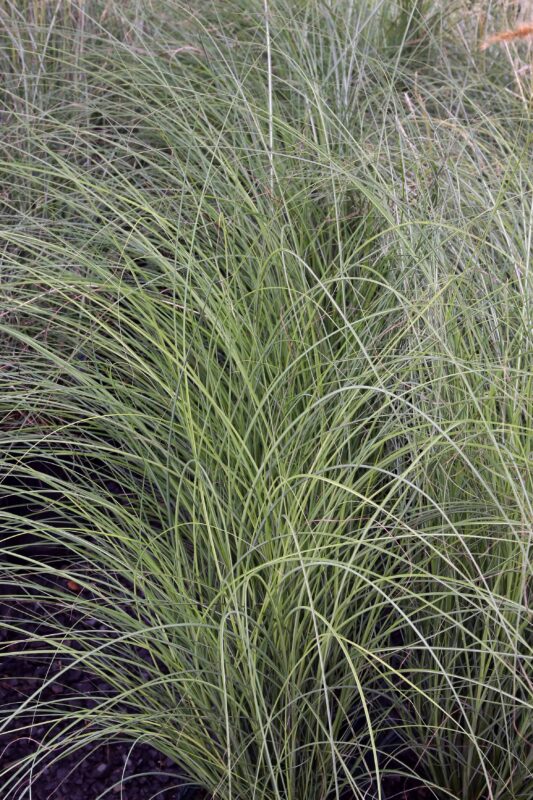
Maiden Grass adds elegance to rock gardens with its graceful, arching leaf blades and fluffy feathery flower plumes. This ornamental grass thrives in full sun, providing vertical interest that beautifully contrasts with lower-growing plants.
Once established, Maiden Grass is drought-resistant and thrives in various soil types, making it a resilient choice. The plant’s airy flower heads create movement in the garden, enhancing the sensory experience while adding a layer of sophistication to the rock garden design.
Rugosa Rose (Rosa rugosa)
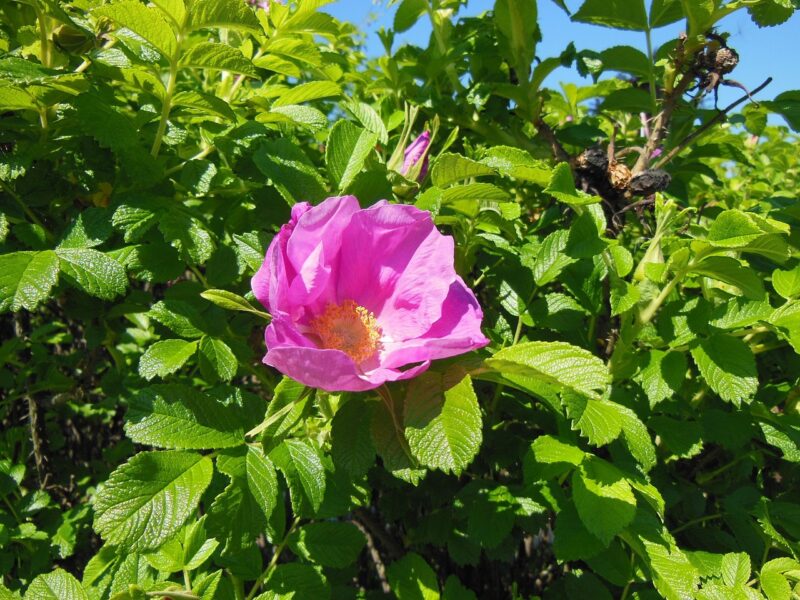
Rugosa Rose is a tough, resilient shrub that offers both beauty and functionality to rock gardens. Known for its fragrant, colorful blooms and glossy green foliage, this rose thrives in poor soils, making it a low-maintenance option for any gardener.
Additionally, Rugosa Roses produce attractive hips in the fall, adding even more seasonal interest. Their resilience against disease and pests, alongside their ability to create a sense of wilderness, makes them a fantastic addition to rock gardens, crafting a balance between cultivated beauty and natural charm.




